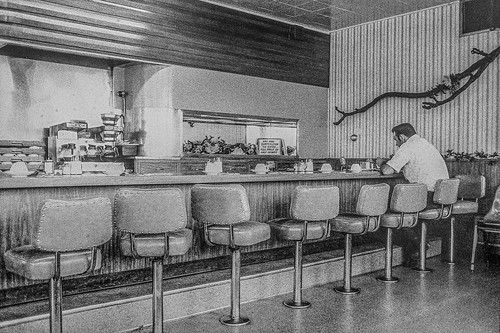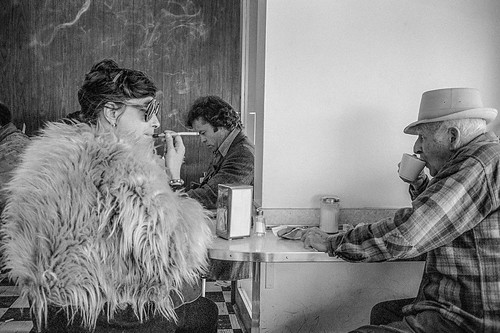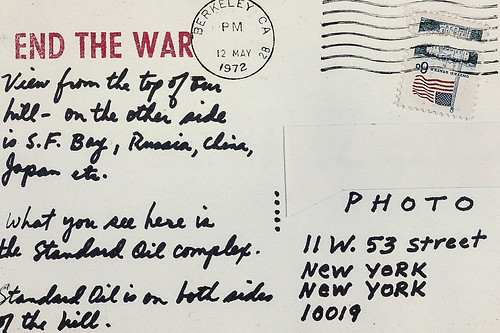The post How to Take Creative Landscape Shots Using Intentional Camera Movement appeared first on Digital Photography School. It was authored by Richard Beech.

If you’re looking to capture some unique, creative photos, then I highly recommend trying out intentional camera movement photography.
Now, many photographic situations rely on ensuring your camera is still as possible during exposure for pin-sharp images. But is keeping your camera still always a good thing?
Instead, why not throw caution to the wind, move your camera while the shutter is open, and explore the range of creative opportunities this offers you as a photographer?
In this article, I’ll show you how to do exactly that!
What is intentional camera movement and why should you use it?
Intentional camera movement (or ICM for short) is a photographic technique where you move the camera as the image is taken.

One example of ICM is panning. The camera follows a moving subject in order to keep the subject sharp and the background blurred.
But while panning can get some great results, it’s actually a pretty tame form of ICM. Moving your camera during the exposure can open up many more creative options for you to try out.
In particular, intentional camera movement can be used to take some truly unique landscape shots. The technique can be exceptionally liberating, and by reducing the number of sharp details in a landscape, it allows you to concentrate on line, form, and color in your images.
In fact, with ICM, a scene that you may ordinarily consider too cluttered might just come to life – by letting you blend colors and shapes for an interesting abstract shot.

One of the reasons I have grown to love ICM is that it enables you to capture a landscape in a unique and personal way that cannot easily be reproduced. It can even breathe new life into overly familiar scenes, letting you see and capture something unique about a location you may have photographed many times before.
If you’re struggling to find inspiration for your next photographic project, or you want to get your creative juices flowing, intentional camera movement is a technique that you should try at least once.
In fact, it’s relatively easy to take some striking shots with ICM.
Plus, it can be a lot of fun!
So let’s take a look at how intentional camera movement photography actually works:
The best settings for intentional camera movement photography
A key factor to get right when using ICM is your shutter speed.
You see, the exposure needs to be long enough to capture significant motion blur (though different shutter speeds will give different effects).
In general, I recommend anything from 1/3s or 1/2s all the way down to multi-second exposures. Of course, you’re always free to experiment with faster or slower shutter speeds; the core of a creative technique like ICM is simply playing around.
Because of these lengthy shutter speeds, shooting in low-light conditions is ideal for ICM. During the daytime, it can be harder to achieve the required shutter speeds, even at your camera’s lowest ISO setting and your lens’s smallest aperture (i.e., highest f-stop number).
If you do decide to shoot in the day, you may need to use a polarizing filter, a neutral density (ND) filter, or a combination of both. Personally, I prefer to use a polarizing filter as a starting point, as this helps to boost colors and cut down on reflections and glare. I will then add a 2-stop or a 4-stop ND filter if the shutter speed needs to be slowed down any further.
When starting out with ICM, it can help to shoot in Shutter Priority mode. Set the shutter speed to around half a second to start, then turn the ISO to the lowest available setting on your camera.

Once you have practiced at this shutter speed, you can use longer exposure times thanks to a combination of low light and filters.
Make sure you focus manually in advance, and turn off the autofocus to prevent the camera from searching for focus during the long exposure.
Also, if you are using a lens that has image stabilization, remember to turn this off.
How to move your camera
Once you have taken control of the shutter speed, the next step is to determine how you’ll move the camera after pressing the shutter button.
Get creative; there are no rules! You can move the camera vertically, horizontally, or diagonally. You can move it fast or slow. Alternatively, you can rotate the camera 360 degrees to create a spiral effect, or change the focal length on a zoom lens during exposure to create a zoom effect.

With practice, you can combine two or more of these movements to create something truly unique. The look and feel of your final images will be determined by the speed, direction, and smoothness of your chosen movements.
Note that you can always use a tripod to control the camera movement. This will help you to capture a smoother result, which can be useful if you wish to retain a straight horizon line.
(Personally, I prefer to work handheld when moving the camera, as it offers greater flexibility and provides more opportunities to experiment with different movements.)
Bold movements can sometimes be more effective, as there is a risk that subtle movements may end up looking like camera shake in the final image.
So bear in mind:
While waving your camera around may not come naturally and may result in you getting some funny looks from amused onlookers, the end results will definitely be worth it!
What to shoot for the best results
Now that you know how to capture beautiful ICM photos, all that’s left is to pick your ICM subjects.
A good place to begin is by looking for locations that offer striking colors, lines, or patterns.
Forests are a favorite ICM subject of mine, particularly during the spring and autumn seasons. Clean, parallel lines provided by the trees, as well as the vibrant colors of nature (created by flowers in the spring and fallen leaves in autumn), lend themselves to a vertical camera movement shot. The movement can be from the top down or from the bottom up, and it can be fast or slow; it really just depends on the effect you wish to capture and how experimental you want to be.

Seascapes can be a good starting point for side-to-side camera movement, where you pan the camera in line with the horizon. Alternatively, in rougher waters, you can try to match the movement of your camera to the movement of the waves for an altogether different effect.
Shooting at sunrise or sunset can provide you with a greater variety of colors to work with, and shooting city lights after dark can also offer a wide range of creative options.
Once you’ve identified a suitable location, you will probably find yourself taking multiple shots with various different movements.
(I should warn you that intentional camera movement photography can sometimes be quite addictive, and you’ll often find your memory cards filling up quickly!)
You may find it useful to set your camera to shoot in burst mode so that you can take a series of shots in quick succession while moving the camera in a particular direction.
That way, you’ll end up with a lot of images to choose from – plus, every new shot will offer you a slightly different composition and effect!
A few intentional camera movement tips
As with any type of photography, images created using intentional camera movement are not going to be to everybody’s taste.
It’s a highly subjective art form, and what works for you will not work for others.
Also, keep in mind basic principles of photography, such as composition and exposure – these are still very important!
Also, while the ICM technique will give you a very abstract result, you may find it helpful to have at least one element of the scene sharp or recognizable in the final image.

Finally, there is an element of trial and error when starting out with intentional camera movement. You’ll quickly find out what works for you and what doesn’t; this will help you develop your own style.
And don’t be too concerned if you do not get an effect you like right away – the technique can be quite hit-and-miss sometimes. Take a lot of shots, and don’t be too quick to delete images that you feel haven’t worked. There is a chance that, after a few days, you may take another look and see something that you like, after all!
Intentional camera movement photography: The next step
One of the great things about intentional camera movement photography is that it is all about how you express yourself!
Think of your camera as your paintbrush.
Get creative, have fun, and start seeing landscapes in an exciting new way.
Now over to you:
Do you have any intentional camera movement photos you’d like to share? Please feel free to display them in the comments below!
The post How to Take Creative Landscape Shots Using Intentional Camera Movement appeared first on Digital Photography School. It was authored by Richard Beech.





















































You must be logged in to post a comment.